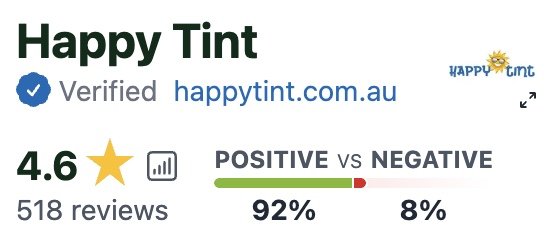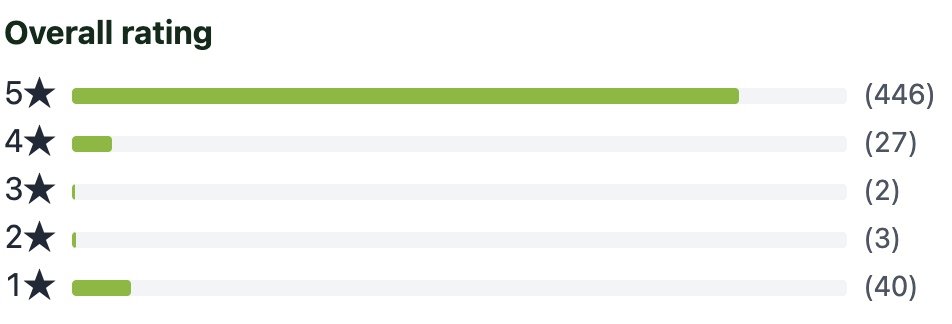Frequently Asked Questions - Car Window Tinting
Visible Light Transmittance
Q: Do prices vary depending on which Visible Light Transmittance VLT % I choose?
A. Prices remain the same no matter what percentage you decide on.
Lifetime Warranty
Q. Is there a warranty on automotive window tinting?
A. Lifetime Warranty, covering both the product and workmanship.
Clean Car
Q. Do I have to wash my windows or clean the car first?
A. No, we prepare the windows ourselves before installation to ensure the surface is free of anything that may affect the film.
Payment Options
Q. What are your payment options for automotive window tinting?
A. ZipPay, Cash, Eftpos (credit card or debit card) or direct bank transfer.
Film Types
Q. What film types do you offer?
A. Our standard film is called the NR Pro Series providing 70% infra-red heat reduction and 72% sun glare block out. Our premium film is called the VTX Pro Ceramic, featuring a scratch resistant hard coat, 95% infrared heat rejection and 93% sun glare reduction.
Film Manufacture
Q. Where are your films made?
A. We only use American made window films.
How Long to Tint
Q. How long does it take to get our windows tinted?
A. For a full car, we recommend allowing for up to 1.5-3 hours. If you require a pickup service, please allow between 3-4 hours.
Privacy Glass
Q. It looks like the dealership only tinted the rear windows; I need the front windows done?
A. Most cars these days come with what’s known as ‘Privacy Glass’, this is just colour within the glass of which provides no UV Protection, heat, or glare reduction.
If you are after maximum benefits of window tinting, we can still tint the privacy glass using our 88% almost clear film, of which provides the benefits, without adding any extra colour to the glass (we do not want to make your glass too dark/unroadworthy, or impact your night time vision)
Zero Interference
Q. Does your window film interfere with AM radio or the GPS?
A. Older carbon films and metalized films have a history of interfering with them. However, our Premium Nano-Ceramic film is metal-free, providing ZERO risk of interference.
Darker Than Legal
Q. What If I wanted to go darker than legal?
A. We can help you achieve this look. However, we advise you to weigh up the pros and cons of doing so, as you will be making your car unroadworthy and reducing the safety of yourself and others on the road.
Also be sure to check your insurance policy as you may not be covered in the event of an accident if your car has illegal window tint.
Old Film Removal
Q. The rear screen of my car has old film that has bubbled, can you help with this? Will this damage my demisters?
A. When it comes to removing old film from your vehicle, it is crucial to do so carefully to avoid damaging demisters. The risk of damaging demisters during the film removal process depends on various factors such as the age of the vehicle, the type of film that was applied, and the strength of its adhesion.
Fortunately, our team have a proven track record of successfully removing old films without causing any damage to demisters. We take pride in our highly experienced installers who are trained to handle such tasks with precision and care. You can trust us to ensure that your vehicle is in safe hands during the removal process.
Heat Reduction
Q. I want to get my car tinted for heat reduction purposes. Does tinting help with this?
A. One of the key mechanisms through which window tinting reduces heat is by minimizing radiant heat transfer. Radiant heat is a form of thermal energy transfer that occurs when infrared radiation from the sun penetrates the vehicle’s windows and heats up the interior space.
Window tinting, especially premium ceramic films like our VTX Pro Ceramic window film, can significantly reduce this radiant heat transfer by blocking 95% percentage of infrared radiation.
Pickup & Drop Off
Q. I see you offer pickup and drop off of vehicles, are our vehicles covered by insurance in the event of an accident?
A. Yes, your vehicle is covered by our insurances in the unfortunate event of an accident. Rest assured our drivers are carefully selected and fully licensed professionals who prioritise safety and responsibility while operating your vehicle.
Courtesy Cars
Q. I have a busy schedule and can’t afford being without a car during the day, how can we work around this?
A. We offer the use of free Happy Tint courtesy cars. You can use one of our Happy Tint vehicles whilst we are working on your car. You can also make use of our free pick up and drop off service.
Visible Light Transmission
Q. What does VLT mean?
A. Visible light transmission levels (VLT) measure the window tint's darkness. These levels are expressed as a percentage of the visible light transmitted through the windows. A lower percentage indicates a darker film. For instance, a 5% VLT film lets through only 5% of visible light, while a 70% film allows 70% of visible light to pass through.
Sunroof
Q. My car has a sunroof can you also tint this?
A. Unfortunately we don’t tint sunroofs as this can cause thermal stress, which can lead to spontaneous cracking or shattering of the glass. It’s generally not recommended for this reason.
Front Windscreens
Q. I’ve seen some cars with a small strip on their front windscreen, is this applicable to all cars?
A. We can install a sun strip on most cars, however some newer cars have too many sensors in the glass at the top of the windscreen, in which case it’s not recommended as tinting can sometimes interfere. VicRoads allows a tinted band of less than 70% VLT above the wiper arc area or the top 10% of the windscreen (whichever is greater).
Moon Roof
Q. My car has a moon roof, can you still tint this?
A. Tinting the moon roof of a vehicle is not generally recommended due to the risk of thermal stress. This condition can lead to spontaneous cracking or shattering of the glass. Instead, it’s advisable to tint the rear window, extending the tint up to where the colour/moon roof begins. By doing so, you can enjoy the added privacy and solar benefits of window film, without exposing yourself to potential safety hazards.





